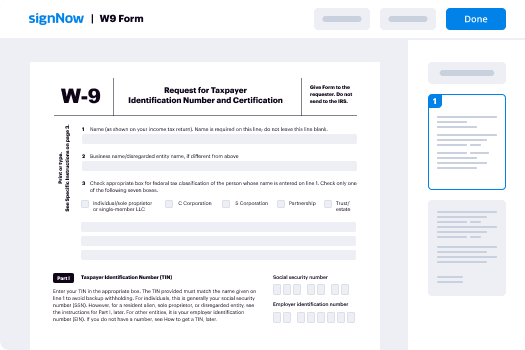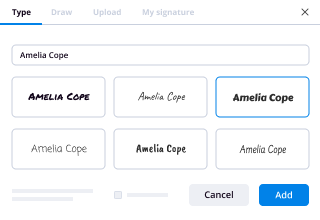FAMILY LAW INFORMATION AND INSTRUCTIONS
CONFIDENTIALITY: If you have concerns about keeping information confidential, such as
your address and/or social security number, please consult an attorney. You should also know
that Domestic Violence Protection Orders or Stalking Orders are available free of charge at the
circuit court clerks’ offices. You may request assistance in obtaining Domestic Violence
Protection or Stalking Orders from your local domestic violence or sexual assault program or
you may call the Wyoming Coalition Against Domestic Violence & Sexual Assault (1-307-755-
0992) . There are also private attorneys who may be willing to assist clients in these matters. If
you have ever obtained a Protection Order against the other party, this information should be
indicated in the Complaint for Divorce or the Counterclaim .
Read through the following information and instructions before completing the forms to
make sure you qualify to file a divorce in Wyoming. To file a complaint, either 1) you or
your spouse must live in Wyoming for at least sixty (60) days immediately before you file,
or 2) you must have been married in Wyoming and you or your spouse must have lived in
Wyoming ever since. You must fill out all forms as completely as possible. If your forms
are not complete, the Judge may reject your packet.
Step 1. Getting Started . The following forms are required in all uncontested
divorce cases. It is recommended that you complete all of these forms before you file the
Complaint for Divorce so that they will be ready to be filed at the appropriate time:
1. Civil Cover Sheet
2. Vital Statistics form
3. Complaint for Divorce
4. Summons
5. Acknowledgement and Acceptance of Service
6. Affidavit for Divorce Without Appearance of Parties
7. Decree of Divorce
*Other forms may be required depending on the Court and on your situation. If additional forms
are needed, they will be discussed below where applicable.
Step 2. File your divorce case . A divorce case begins with the filing of a
Complaint for Divorce . A Complaint for Divorce is a written request to the court for a divorce.
The person who originally asks for this legal action is called the Plaintiff and remains the
Plaintiff throughout the case.
The Complaint for Divorce is given to the Clerk of the District Court , whose office is
usually located in the county courthouse or a branch of the county courthouse. A list of the
Clerk of District Court for each Judicial District is included in the packet. You will file your
case in the District Court in the county where either you or your spouse reside. A case number,
also called a civil action number , is assigned and an official court file is opened. Delivering the
Family Law Information and Instructions (No Minor Children)
September 2017
Page 1 of 11
Complaint for Divorce to the Clerk’s office is called filing a case. A filing fee is required. Ask
the Clerk what the amount of the filing fee is and what forms of payment are accepted.
A. When you file the Complaint for Divorce , you will also need to file the Civil
Cover Sheet . Follow the instructions that accompany this form.
B. You will also need to file the Vital Statistics form . Fill out all portions of this
form EXCEPT the “Decree” section, which will be completed by the Clerk when your divorce is
final.
C. You will also need to have the Clerk sign (a/k/a “issue”) the Summons .
Take the original and two (2) copies of each document to the Clerk’s office. The Clerk
will give copies of each document back to you after stamping them with the date they were filed.
This is called a “ file stamp. ” You should keep one copy of each document for your records.
The other set of documents will need to be served upon the Defendant.
Step 3. Serve the Defendant . The person against whom the original legal action
is being requested is called the Defendant and remains the Defendant throughout the case. The
Defendant is expected to file an answer to the Complaint for Divorce .
Once your case has been filed with the Clerk, a file-stamped copy of the paperwork must
be formally given to (a/k/a served on) the Defendant. The Defendant needs to be served with the
Complaint for Divorce and the Summons so the Court has proof that he or she received the
papers. A Sheriff must personally serve the Complaint for Divorce and the Summons on the
Defendant, unless the Defendant completes an Acknowledgment and Acceptance of Service
form. Other forms of service exist, but these are the two easiest methods that meet the
formal service requirement for a Complaint for Divorce . If you cannot serve the Defendant
Family Law Information and Instructions (No Minor Children)
September 2017
Page 2 of 11Case Number : When you start a lawsuit by filing the paperwork with the Clerk of the District Court, a
case number will be assigned by the Clerk. You must include that case number on all further paperwork
in the “ caption. ” The caption is the top section of a pleading, motion, and complaint stating the name of
the Plaintiff, Defendant, the District Court the case is filed in and the case number.
RECAP for Step 2 : To start your divorce case, you will need to file the following documents with the Clerk of
the District Court’s office located in the county courthouse in the county where either you or your spouse resides:
A. Civil Cover Sheet
a. Follow the instructions that accompany this form for help completing it correctly;
B. Vital Statistics Form
a. Fill out all portions, EXCEPT the “Decree” section, which will be completed by the Clerk
when your divorce is final;
C. Complaint for Divorce ; and
D. Summons ;
E. Pay the filing fee ;
F. Take the original and two (2) copies of each document to the Clerk’s office.
a. The Clerk will give both copies back to you after file-stamping them.
b. You should keep one copy for your records.
c. The other set of documents will need to be served upon the Defendant.
by either of these methods, ask the Clerk for additional forms for alternative methods of
service. These forms are also available in Pro Se Packet 10.
You MUST give the Defendant official notice that you have filed for divorce within 90
days from the date you filed the Complaint for Divorce. This is done by serving a file-stamped
copy of the Summons and Complaint for Divorce upon the Defendant or by having the Defendant
sign an Acknowledgment and Acceptance of Service form stating a copy of those documents were
received. If you do not serve the Defendant within 90 days, your case can be dismissed by the
Court.
A. How to Serve the Defendant. Choose ONLY ONE of the following options to
serve the Defendant:
Option 1– Service by Sheriff
Summons . It is recommended to have a Sheriff in the county where the Defendant can
be found serve him or her with the papers. There will be a separate service fee (usually fifty
($50.00) dollars in Wyoming). You can contact the Sheriff’s department in the county where
the Defendant lives to determine the fee charged by the Sheriff. This is also true if your spouse
is going to be served out of state. You will need to provide the Sheriff with a file-stamped copy
of the Summons and Complaint for Divorce to be served on the Defendant.
Proof of Service. The Sheriff’s office will complete the last page of the Summons called
the “ Return ” (or they may have their own form - an “ Affidavit of Service ”) and will usually file
the original with the Clerk’s office and send you a copy. If you receive what looks like the
original “ Return ” or “ Affidavit of Service ” from the Sheriff, call the Clerk’s office to ensure the
original has been filed. If it has not, then file the original with the Clerk’s office and keep a copy
for yourself. This is the proof that the Defendant was given proper notice.
Note : Once the Defendant has been served, you MUST file the original Summons and
Return (or Affidavit of Service ) with the Clerk’s office so that the Judge knows that
proper service was made.
OR:
Option 2 – Acknowledgement and Acceptance of Service . If the Defendant agrees, he or she
may sign a form stating that a copy of the Summons and Complaint for Divorce were received.
If the Defendant agrees, you will need to fill out an Acknowledgement and Acceptance of Service
form. The Defendant must sign this document in front of a Notarial Officer.
Family Law Information and Instructions (No Minor Children)
September 2017
Page 3 of 11Notarizing Signatures . Some forms will require you to have your signature notarized. Notarial
Officers may administer the oath and witness your signature, or in many cases, Clerks of Court will be
willing to administer the necessary oath. Each Clerk’s office has their own policy so check with them
first before seeking notarization of your signature on the forms.
Proof of Service. Once the Acknowledgement and Acceptance of Service form is signed,
take the original and two (2) copies of the signed form to the Clerk’s office for filing. You
should keep one copy for your records and provide the other copy to the Defendant.
Note : You must file the signed Acknowledgment and Acceptance of Service form and the
original Summons with the Clerk’s office so that the Judge knows that proper service on
the Defendant was made.
Step 4. Wait for the Defendant’s time to Answer to expire . Once
the Defendant is served, he or she has 20 days (if served in the State of Wyoming or 30 days if
served out-of-state) to file an Answer to the Complaint for Divorce . You must wait for the
appropriate time period to expire before you can proceed with the divorce case. You must wait
the 20 days (or 30 days if served out-of-state) even if the Defendant tells you that he or she is not
going to file an Answer .
Computation of Time Limits . - In computing most time limits, unless otherwise
stated, the day the document is served shall not be included. The last day of the time
period is included, unless it lands on a Saturday, a Sunday, or a legal holiday, or, if
the Courthouse is closed then the time limit will be on the very next day that the
Courthouse is open. If you have questions about time limits you should seek the
advice of an attorney.
While waiting, move on to Step 5 . You can also use this time to continue to work on
the other required forms to be sure they are filled out completely and correctly.
Family Law Information and Instructions (No Minor Children)
September 2017
Page 4 of 11RECAP for Step 3 : You MUST give the Defendant official notice that you have filed for divorce within 90 days
from the date you filed the Complaint for Divorce . Choose one of the following methods:
Option 1 – Service by Sheriff
A. Provide a copy of the file-stamped Summons and Complaint for Divorce to the Sheriff where
the Defendant lives;
B. Pay the service fee; and
C. Once the Defendant is served, be sure the original Summons and the Return or the Affidavit
of Service are filed with the Clerk’s office; OR
Option 2 – Acknowledgement and Acceptance of Service
A. Provide a file-stamped copy of the Summons and Complaint for Divorce to the Defendant;
B. Have the Defendant sign the Acknowledgment and Acceptance of Service form in front of a
Notarial Officer;
C. File the original Acknowledgment and Acceptance of Service form with the Clerk’s office;
and
D. File the original Summons with the Clerk’s office.
RECAP for Step 4 : You MUST wait for the Defendant’s time to file an Answer to expire before you can proceed
with your divorce case. In the meantime:
A. Mark on the calendar when the Defendant’s time to Answer expires;
B. Move on to Step 5 while waiting; and
C. Use this time to ensure the required forms are filled out completely and correctly.
Step 5. Initial Disclosures . The law requires certain information be made
available within thirty (30) days after the Defendant is served, including a schedule of financial
assets; schedule of non-financial assets; schedule of all debts owed individually or jointly;
location(s) of safety deposit box(es); employment information; information regarding other
income and retirement accounts; and a summary of the facts believed to support the claim of
superior entitlement to custody where child custody is at issue. Both parties are required to
provide this information in order to fully disclose all assets and debts of the parties.
A. WHEN TO SERVE : Initial Disclosures must be sent to the Defendant (or
his/her attorney) WITHIN 30 DAYS AFTER THE DEFENDANT IS SERVED. Be sure
to keep a copy of this document for your records.
B. DO NOT FILE THE INITIAL DISCLOSURES WITH THE COURT . This
form is only given to the Defendant (or his/her attorney).
************************************************************************
Step 6. Once the time for the Defendant to file an Answer has expired and you’ve sent
your Initial Disclosures to the Defendant, then several options exist to move your case
forward to get a Decree of Divorce . Pick the option that best describes your situation:
Option A . If the Defendant filed an Answer or Answer and Counterclaim and
you both agree on all of the issues of your divorce, follow option A below.
Option B . If the Defendant did not file an Answer or Answer and
Counterclaim , follow option B below.
Option C . If the Defendant filed an Answer or Answer and Counterclaim and
you do NOT agree on all the issues of your divorce, follow option C .
Family Law Information and Instructions (No Minor Children)
September 2017
Page 5 of 11 Please note that “A party must make its disclosures based on the information then reasonably
available to it and is not excused from making its disclosures because it has not fully
completed its investigation of the case or because it challenges the sufficiency of another
party's disclosures or because another party has not made its disclosures.”
RECAP for Step 5 : You MUST provide your Initial Disclosures to the Defendant within 30 days after the
Defendant is served with the Summons and Complaint for Divorce .
A. Mark on the calendar the deadline to send your Initial Disclosures ; and
B. Send your Initial Disclosures to the Defendant by the deadline.
C. DO NOT file the Initial Disclosures with the Clerk’s office.
Option A. The following instructions apply if the Defendant filed an
Answer or Answer and Counterclaim , and you both agree on all of
the issues of your divorce. If you and the Defendant agree on the issues involved in
your divorce, then you will need to complete the following:
A. Fill out an Affidavit for Divorce Without Appearance of Parties .
B. Fill out a Decree of Divorce . This form will need to be filled out completely,
signed by both you and the Defendant and both of your signatures notarized. In addition to
signing the Decree , you should also initial each page of the Decree to verify that each page
contains the terms you agreed upon.
C. Other Form(s) : Other forms may be required depending on the county where
your case is filed. Ask the Clerk if additional forms are required before your Decree of Divorce
will be entered.
D. Copies and Envelopes . Take an original and two (2) copies of each of the above
documents for filing with the Clerk and two (2) addressed, stamped envelopes (one addressed to
you and one to the Defendant with enough postage to cover the cost of mailing the Decree of
Divorce to you and the Defendant). A copy of any documents that you file (other than the
Decree of Divorce ) must be sent to the Defendant on the date that you filled out on the
Certificate of Service on each document.
If a hearing is not required by your Court, the Clerk will mail a copy of your
Decree of Divorce if accepted by the Court.
If a hearing is required by your Court, follow the next steps:
E. Hearing . In some Courts, a hearing is required before the Judge will sign the
Decree of Divorce . If this is the case, you will need to request a hearing by completing the
Request for Setting . If you have reached an agreement, check the box that states that the parties
have entered into a settlement agreement. Indicate how much time you will need for the hearing
(usually 15 minutes if there is an agreement). You will file the Order Setting Hearing with the
Clerk’s office, and the Court will fill in the hearing date and time and mail a copy to you and the
Defendant. You will need to provide an addressed, stamped envelope for you and the Defendant
to the Clerk. These documents are additional forms contained in your packet.
F. Evidence . At the hearing, you will need to tell the Judge that either 1) you or
your spouse have lived in Wyoming for at least 60 days immediately before you filed the
Complaint for Divorce , or 2) you and your spouse were married in Wyoming and at least one of
you has lived in Wyoming ever since. You will also need to tell the Judge about irreconcilable
differences in the marriage (why you want a divorce), and why the settlement you reached (who
gets what) is fair.
Family Law Information and Instructions (No Minor Children)
September 2017
Page 6 of 11
Give the Decree of Divorce to the Judge. The Judge may ask you questions. The
Judge will not guide you through the hearing, tell you how to proceed or advise you on the law.
Following the hearing, the Judge will make any necessary changes to the Decree of Divorce and
will sign it.
G. When will your divorce become final ? Your divorce will not be final until the
Judge approves the Decree of Divorce and it is filed with the Clerk. This process may take time
if the Judge requires changes to the proposed Decree . You must verify with the Clerk that the
Decree of Divorce has been file-stamped before you can be sure your divorce is final.
RECAP for Option A : If you and the Defendant agree on all issues in the divorce and the Defendant filed an
Answer or Answer and Counterclaim , complete the following:
Remember: Take an original and two copies of each document to file with the Clerk’s office. You will need to send
a copy of any filed document to the Defendant unless otherwise stated below.
1. Affidavit for Divorce Without Appearance of Parties
2. Decree of Divorce
Take an original and two (2) copies of the Decree of Divorce for filing with the Clerk and two (2)
addressed, stamped envelopes (one addressed to you and one to the Defendant with enough postage to
cover the cost of mailing the Decree of Divorce to you and the Defendant).
3. Complete and file any additional documents required by your Court.
4. If your Court requires a hearing before entering a Decree of Divorce , then you will also need to file and do
the following:
Request for Setting
Order Setting Hearing
Take an original and two (2) copies of the Order Setting Hearing for filing with the Clerk and two (2)
addressed, stamped envelopes (one addressed to you and one to the Defendant with enough postage to
cover the cost of mailing the Order Setting Hearing to you and the Defendant).
Attend the Hearing
Your divorce is final when the Decree of Divorce has been signed by the Judge and filed by the Clerk.
Option B. If the Defendant does not file an Answer or Answer and
Counterclaim , obtain a default divorce by following these steps :
A. Default Divorce . After the required waiting period has expired, you may obtain
what is referred to as a divorce by default if the Defendant does NOT file an Answer or Answer
and Counterclaim to the Complaint for Divorce.
B. Necessary forms . Fill out and sign the Application for Entry of Default and
Affidavit in Support of Default . Take an original and two (2) copies of these documents to the
Clerk and the blank Entry of Default . If your paperwork is correct, the Clerk will sign the Entry
of Default . These are additional forms located in your packet.
C. Additional Documents . After the Entry of Default is signed by the Clerk,
complete Step 6, Option A, items A through D above. MAKE SURE TO MARK
“DEFAULT” ON THE DECREE.
Family Law Information and Instructions (No Minor Children)
September 2017
Page 7 of 11
D. Default Hearing . Some Courts will not enter a Default Decree of Divorce unless
there is a hearing. Ask the Clerk if this is required for your Court. If it is, fill out a Request for
Setting and request 15 minutes for the hearing. You will file the Order Setting Hearing with the
Clerk’s office and they will fill in the hearing date and time and mail a copy to you and the
Defendant. You will need to provide an addressed, stamped envelope for you and the Defendant
to the Clerk.
E. Evidence . At the hearing, you will need to tell the Judge that either 1) you or
your spouse have lived in Wyoming for at least 60 days immediately before you filed the
Complaint for Divorce , or 2) you and your spouse were married in Wyoming and at least one of
you has lived in Wyoming ever since. You will also need to tell the Judge about irreconcilable
differences in the marriage (why you want a divorce), and why the settlement you reached (who
gets what) is fair.
Give the Decree of Divorce to the Judge. The Judge may ask you questions. The
Judge will not guide you through the hearing, tell you how to proceed or advise you on the law.
Following the hearing, the Judge will make any necessary changes to the Decree of Divorce and
will sign it.
F. When will your divorce become final ? Your divorce will not be final until the
Judge signs the Decree of Divorce and it is filed with the Clerk. This process may take time if the
Judge requires changes to the proposed Decree . You must verify with the Clerk that the Decree
of Divorce has been file-stamped before you can be sure your divorce is final. The time limit to
appeal a decree begins to run from the day the Decree of Divorce is filed with the Clerk’s office.
RECAP for Option B : If the Defendant did NOT file an Answer or Answer and Counterclaim , complete the
following:
Remember: Take an original and two copies of each document to file with the Clerk’s office. You will need to
send a copy of any filed document to the Defendant unless otherwise stated below.
1. Application for Entry of Default
2. Affidavit in Support of Default
3. Entry of Default (Clerk will sign if your paperwork is correct)
4. Affidavit for Divorce Without Appearance of Parties
5. Decree of Divorce - MAKE SURE TO MARK “DEFAULT” ON DECREE.
A. Take an original and two (2) copies of the Decree of Divorce for filing with the Clerk and
two (2) addressed, stamped envelopes (one addressed to you and one to the Defendant with
enough postage to cover the cost of mailing the Decree of Divorce to you and the
Defendant).
6. Complete and file any additional documents required by your Court
7. If your Court requires a hearing before entering a Decree of Divorce , then you will also need to file
and do the following:
A. Request for Setting
B. Order Setting Hearing
C. Take an original and two (2) copies of the Order Setting Hearing for filing with the Clerk
and two (2) addressed, stamped envelopes (one addressed to you and one to the Defendant
with enough postage to cover the cost of mailing the Order Setting Hearing to you and the
Defendant)
D. Attend the Hearing
Family Law Information and Instructions (No Minor Children)
September 2017
Page 8 of 11
Your divorce is final when the Decree of Divorce has been signed by the Judge and filed by the Clerk.
Option C. If the Defendant Answers or Answers and Counterclaims ,
and you and the Defendant do NOT agree on all issues of your
divorce, you will need to have a trial :
A. You must file a Reply to the Counterclaim . If the Defendant has filed an
Answer and Counterclaim for a divorce, you will have a time limit (usually 20 days) to file a
written response ( Reply to Counterclaim ) to the counterclaim. The original, signed copy of your
reply must be filed with the Clerk and a copy must be sent to the Defendant (or his/her attorney).
Caution: If you do not file the original Reply to Counterclaim with the Clerk
within the time allowed, the Defendant can seek a default divorce against you
and may get what he/she asked for in his/her counterclaim.
B. Trial. If there is no agreement, your case will have to be heard and decided by a
Judge at a trial.
Caution: It is strongly recommended that you hire or find an attorney to
represent you at trial, though you may represent yourself. You proceed at
your own risk and will be expected to know the laws.
C. Request a trial date. You will need to request a hearing by completing a
Request for Setting . Write in “trial” where it asks the type of hearing. Indicate how much time
you think it will take for you and the other party to present your evidence and write that in
(usually one (1) to three (3) hours). You also need to decide whether or not you want a Court
reporter to record the proceeding. SEE BELOW FOR DETAILS ON GETTING A COURT
REPORTER. It is very difficult to appeal the Judge’s decision if you do not get a Court reporter
to take down everything that is said at the trial.
You must file the Request for Setting and the Order Setting Divorce Trial and
Requesting Pretrial Statements with the Clerk’s office and someone there will fill in
the hearing date and time and mail a copy to you and the other party. You will need
to provide an addressed, stamped envelope for you and the Defendant to the Clerk.
Both the Request for Setting and the Order Setting Divorce Trial and Requiring
Pretrial Statements are additional forms contained in your packet.
D. Pretrial Disclosures. Both parties must provide to the other party AND
PROMPTLY FILE WITH THE COURT the Pretrial Disclosures regarding the evidence that it
may present at trial. If you have questions, you should contact an attorney.
When are the Pretrial Disclosures due? Unless otherwise directed by the
Court, these disclosures must be made at least 30 days before trial .
Take the original and two (2) copies to the Clerk for filing. Keep one copy for
your records and send the other copy to the Defendant (or his/her attorney).
Family Law Information and Instructions (No Minor Children)
September 2017
Page 9 of 11
E. Settlement before trial. In the event that your case settles before the trial, you
must present the Court with the agreement (or completed and signed Decree of Divorce ) in
writing before the Court will take the trial off of the schedule. There will be no continuances or
canceling of the trial date based on telephone calls. If you need a continuance, you should
contact an attorney for assistance in seeking one.
F. Court Reporter. If you wish to have a Court reporter you shall provide notice to
the official Court reporter as soon as possible, but no later than three (3) working days before
the matter is set for hearing. You can provide notice to the court reporter by phone or by
submitting a written request. Please note that if providing notice through the mail, the request
must be received by the court reporter no later than three working days prior to the hearing. The
Clerk will be able to inform you which court reporter to contact. The three-day notice
requirement will not be waived by the Court. The notice is required for all civil matters
including jury trials.
G. Evidence and Witnesses. At the hearing, you will need to present your evidence
and witnesses. If the Order Setting Divorce Trial and Requesting Pretrial Statements is entered
(signed by the Judge), you must follow the terms and provide the Court with the information
requested in that document, including copies of exhibits you want to introduce at the trial and a
list of your proposed witnesses and what their testimony is going to be about within the time
frame ordered (usually 3 to 5 days prior to the trial). Under the law, the Judge cannot help you
or assist you at trial. You are on your own without an attorney.
H. Final Decision ( Decree of Divorce ). Following the trial, the Judge will make a
decision or may take the matter under advisement, meaning he or she will need to think further
before making a determination. If the Judge instructs you, you must take that decision and type
it into the Decree of Divorce incorporating the Judge’s decision.
You are again reminded that, if you choose to continue without an attorney,
you are expected to know what to do and how to do it. The Judge will not
guide you through the trial/hearing, tell you how to proceed or advise you on
the law.
You will also need to complete any additional forms that may be required by
your Court.
I. When will your divorce become final? Your divorce will not be final until the
Judge signs the Decree of Divorce and it is filed with the Clerk of Court. This process may take
time if the Judge requires changes to the proposed Decree . You must verify with the Clerk’s
office that the Decree of Divorce has been file-stamped before you can be sure your divorce is
final. The time limit to appeal a decree begins to run from the day the Decree of Divorce is filed
with the Clerk’s office.
RECAP for Option C : If the Defendant filed an Answer or Answer and Counterclaim and you do NOT agree on
the issues, complete the following:
Family Law Information and Instructions (No Minor Children)
September 2017
Page 10 of 11
Remember: Take an original and two copies of each document to file with the Clerk’s office. You will need to send
a copy of any filed document to the Defendant unless otherwise stated below.
1. If the Defendant filed an Answer and Counterclaim , file a Reply to the Counterclaim within 20
days after you receive the Answer and Counterclaim .
2. Request a trial date
a. Request for Setting
b. Order Setting Divorce Trial and Requiring Pretrial Statements
c. Take an original and two (2) copies of the Order Setting Divorce Trial and Requiring
Pretrial Statements for filing with the Clerk and two (2) addressed, stamped envelopes
(one addressed to you and one to the Defendant with enough postage to cover the cost of
mailing the Order Setting Divorce Trial and Requiring Pretrial Statements to you and the
Defendant).
3. File your Pretrial Disclosures and Pretrial Memorandum
4. No later than 3 working days before the trial, request a court reporter, if desired
5. Attend the Trial
6. Decree of Divorce
a. Take an original and two (2) copies of the Decree of Divorce for filing with the Clerk and
two (2) addressed, stamped envelopes (one addressed to you and one to the Defendant
with enough postage to cover the cost of mailing the Decree of Divorce to you and the
Defendant).
7. Complete and file any additional documents required by your Court.
Your divorce is final when the Decree of Divorce has been signed by the Judge and filed by the Clerk.
Family Law Information and Instructions (No Minor Children)
September 2017
Page 11 of 11
















